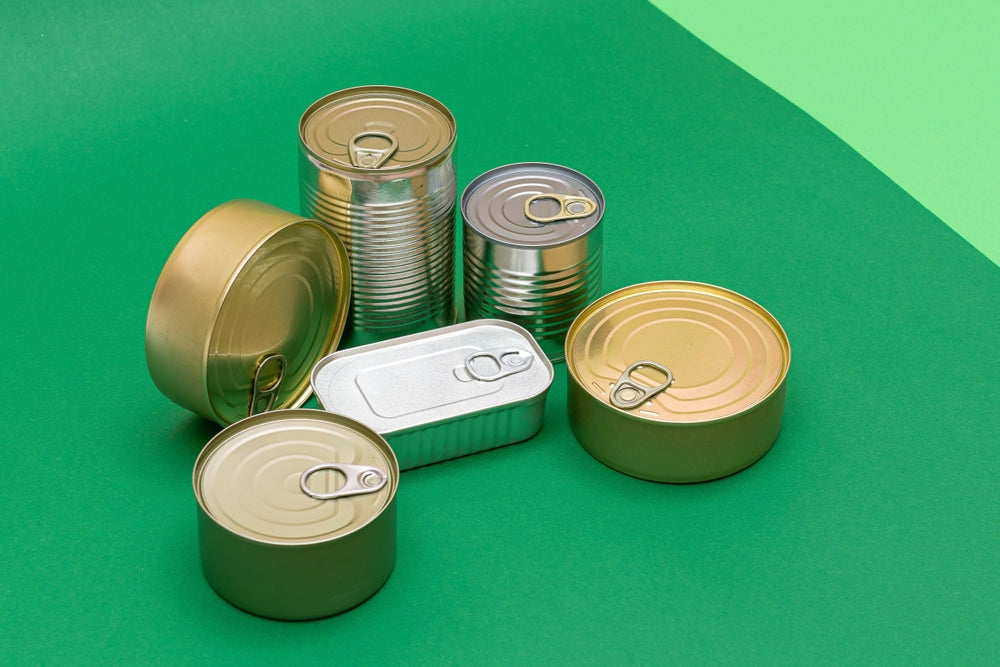Introduction
Tin cans have played a significant role in preserving and packaging various goods throughout history. These versatile containers have revolutionized the way we store, transport, and consume products. Understanding the historical significance of tin cans provides valuable insights into their evolution from preservation to customization.
In this article, we will delve into the fascinating history of tin cans, tracing their journey from their humble beginnings as a preservation method to their modern-day customization. We will explore how tin cans have transformed over time, adapting to changing needs and embracing innovative designs and branding techniques. Join us as we uncover the captivating story of tin cans and their remarkable evolution.
Early Beginnings: Invention and Preservation

The invention of the tin can is credited to Peter Durand, who received a patent for the process in 1810. However, the concept of preserving food in sealed containers dates back even further to civilizations like the ancient Egyptians and Romans. Initially developed as a solution for long-term food preservation, tin cans proved invaluable for military and maritime purposes. These airtight and durable containers protect food from spoiling, significantly extending its shelf life.
During the 19th century, tin cans revolutionized the food industry, enabling long-distance transportation and expanding the availability of preserved food. Canned food became a staple for military rations, exploratory expeditions, and provisioning during long voyages. Moreover, the use of tin cans had a profound impact on public health, reducing the risks of foodborne illnesses and improving nutrition in various populations.
By understanding the origins of tin cans as a preservation method, we can appreciate the transformative impact they had on food storage and transportation during the 19th century. In the next section, we will explore how industrial advancements further shaped the tin can industry and paved the way for its customization in the modern era.
Industrial Revolution and Advancements

The Industrial Revolution, spanning the late 18th to early 19th centuries, brought about transformative changes in manufacturing processes and machinery. This revolution had a profound impact on tin can production, revolutionizing the industry through mechanization and streamlined manufacturing.
With the introduction of new manufacturing techniques, such as the use of iron and steel for can construction, tin-plated containers were replaced. The development of machinery, including can-making machines and automated processes, further improved production efficiency and accuracy.
Innovations in sealing methods, such as soldering and later the introduction of can seamers, ensured secure and airtight closures. As tin can production became more efficient and cost-effective, its usage expanded beyond food preservation. Industries such as chemicals, paints, oils, and even ammunition embraced tin cans for their reliable storage and protective qualities. This diversification of tin can usage showcased its versatility and adaptability to meet the needs of different industries, extending its impact far beyond food preservation.
The Industrial Revolution and subsequent advancements in manufacturing techniques and materials paved the way for the widespread adoption of tin cans in various industries. In the following section, we will explore how tin cans played a significant role in times of war and exploration.
Tin Cans in War and Exploration

Tin cans played a crucial role in times of war and exploration, providing sustenance and supplies to armies and explorers in challenging circumstances. Their durable and airtight design made them ideal for preserving food and essential items. Tin cans ensured that armies and explorers had access to non-perishable food sources, reducing reliance on fresh provisions and enabling extended campaigns and expeditions. They helped mitigate the risk of food shortages and ensured a steady supply of nourishment.
Throughout history, tin cans were used in various military campaigns and expeditions.
- In the Napoleonic Wars, the French army supplied preserved food to soldiers on the battlefield using tin cans, ensuring a reliable source of sustenance during long campaigns.
- Explorers like Robert Falcon Scott and Ernest Shackleton relied on tin cans to store food and supplies during their polar expeditions to the Arctic and Antarctic regions.
- In World War I and II, tin cans played a vital role in military rations, providing soldiers with nutritious meals that could be easily transported and consumed in the field.
These examples illustrate how tin cans were instrumental in ensuring the availability of preserved food and essential supplies during times of war and exploration. In the next section, we will examine how tin cans have evolved from utility to customization in the modern era.
From Utility to Customization: Tin Cans in the Modern Era

In the modern era, tin cans have evolved beyond their original purpose of food preservation and have found new applications in various sectors. Advancements in manufacturing techniques, materials, and design have contributed to their transformation into customizable and versatile packaging solutions.
The tin can industry has embraced customization to align with the unique identities of different products and brands, recognizing the increasing importance of branding and marketing. Customizable tin cans enable creative and eye-catching designs, allowing products to stand out on store shelves and capture consumer attention.
Tin cans have expanded their presence beyond the food industry, making their mark in sectors such as cosmetics, beverages, and gifts. In the cosmetics industry, tin cans offer a stylish and eco-friendly packaging option for products like lip balms, solid perfumes, and body butter. Beverages, including craft beers and specialty drinks, have embraced tin cans for their portability, convenience, and the ability to showcase unique branding and artwork. Tin cans have also become popular in the realm of gift packaging, as they can be customized with personalized designs and messages, providing a memorable and reusable option.
The modern era has witnessed the transformation of tin cans from utilitarian containers to customizable packaging solutions. Their versatility has allowed them to find applications in various sectors, catering to the evolving needs and preferences of consumers. In the next section, we will explore the sustainability aspect of tin cans and their contribution to eco-friendliness.
Sustainable Tin Cans: A Step Towards Eco-Friendliness

Tin cans offer several environmental advantages over other packaging materials, such as plastic or glass, making them a more eco-friendly choice. Tin is a naturally occurring and abundant resource, and its extraction has a relatively low environmental impact compared to the production of plastic or glass. Furthermore, tin cans have a high strength-to-weight ratio, requiring less material for packaging, which reduces resource consumption.
In terms of sustainability, tin cans excel in recyclability and reusability. They are highly recyclable and can be processed back into raw materials for manufacturing new cans or other products. Recycling tin cans helps conserve resources, reduce energy consumption, and minimize waste sent to landfills. Moreover, tin cans can be reused for various purposes, extending their lifespan and reducing waste.
The tin can industry has also made efforts to reduce its environmental impact. Manufacturers have implemented more efficient production processes and reduced energy consumption. Some have incorporated recycled materials into tin can production, further lowering the environmental footprint. Initiatives like lightweighting, which reduces the amount of metal used in cans without compromising integrity, have also contributed to resource conservation.
Through their recyclability, reusability, and industry efforts to reduce environmental impact, tin cans have emerged as a sustainable packaging option. In the final section, we will explore future trends and innovations in the tin can industry.
Future Trends and Innovations of Tin Cans

The custom tin can industry is witnessing emerging trends and innovations that shape its future trajectory. Personalization and customization remain key trends, allowing brands to create unique packaging experiences for their products. To enhance consumer engagement, interactive designs incorporating augmented reality (AR) and QR code integration are being adopted, providing additional product information or promotional content. Advancements in smart packaging bring real-time information on product freshness, temperature, or authenticity through sensors and RFID tags integrated into tin cans.
The industry is also embracing sustainable materials, such as biodegradable or compostable coatings, to enhance eco-friendliness and reduce environmental impact. Collaboration with recycling and waste management industries can improve recycling infrastructure and increase recycling rates for tin cans.
Looking ahead, tin cans hold potential for expansion into new sectors like pharmaceuticals, electronics, or personal care products. Advancements in manufacturing techniques could lead to tin cans with complex shapes and structures tailored to specific product needs. Printing techniques and materials innovations enable intricate and visually stunning designs on tin cans, amplifying their aesthetic appeal.
The future of tin cans holds exciting possibilities, including personalized packaging experiences, smart features, and sustainable advancements. As technology and consumer demands continue to evolve, the tin can industry will undoubtedly explore new innovations and applications to meet the needs of the market.
Conclusion
In conclusion, the evolution of tin cans from their historical significance in food preservation to their modern-day customization has been remarkable. From their early pioneers to the Industrial Revolution and beyond, tin cans have played a crucial role in storage, transportation, and branding. With their sustainability and future innovations, tin cans are poised to continue shaping the packaging industry and meeting the demands of consumers in the years to come.

 sunny@connietinbox.com
sunny@connietinbox.com 2-Piece Tin Can
2-Piece Tin Can 3-Piece Tin Can
3-Piece Tin Can Canned Fish
Canned Fish Canned Vegetables
Canned Vegetables Canned Fruit
Canned Fruit Canned Pet Food
Canned Pet Food
